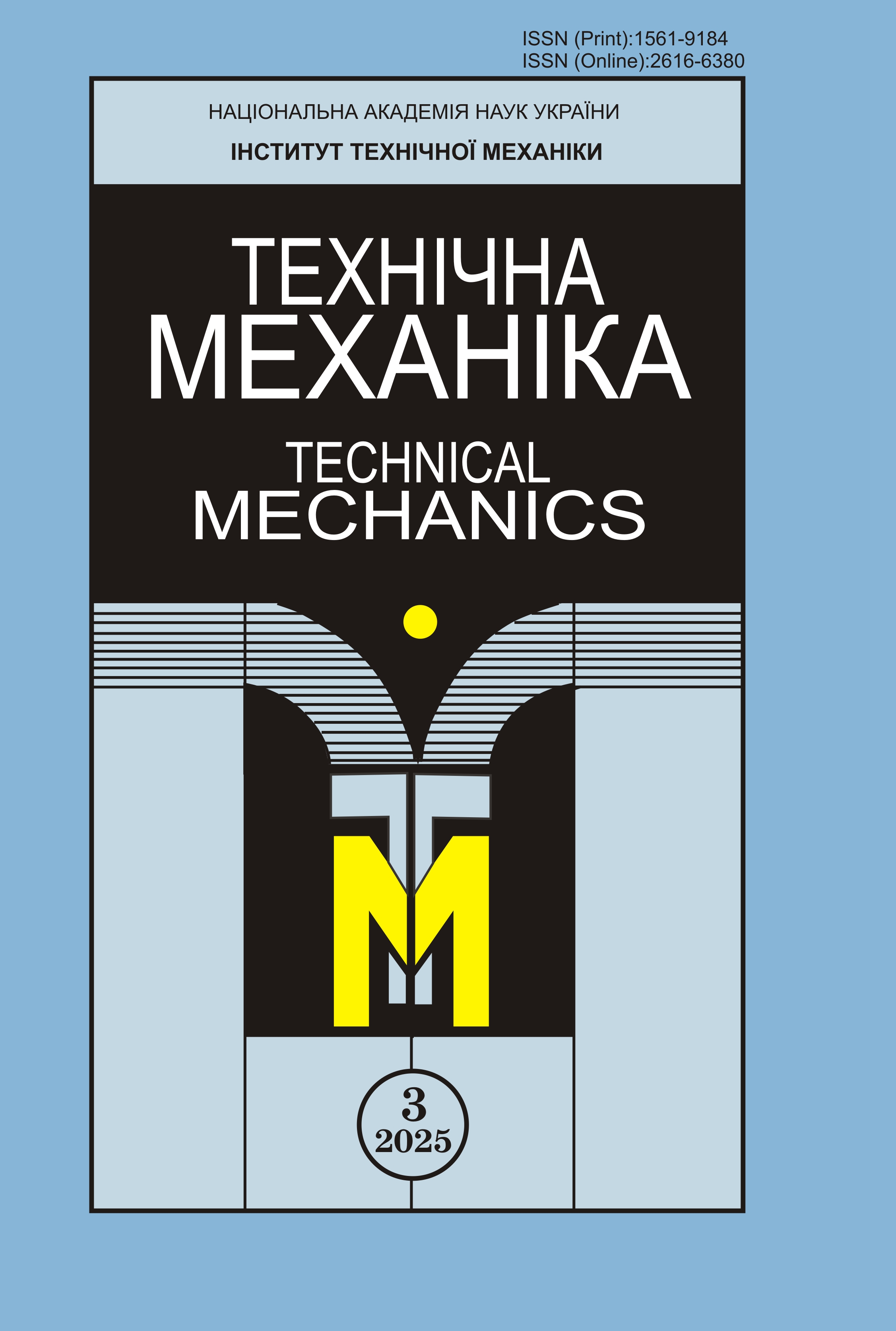MICROWAVE METHODS OF EARTH REMOTE SENSING AND THE PROSPECTS FOR THEIR USE
Keywords:
microwave radiometer, radar, scatterometer, altimeter, digital surface model, interferometry, polarimetry.Abstract
DOI: https://doi.org/10.15407/itm2025.03.098
Microwave remote sensing (RS) allows one to obtain information at any time of day, regardless of solar illumination and in a wide range of meteorological conditions, which gives it an advantage over Earth RS methods using the optical and thermal ranges of electromagnetic radiation. At the same time, the potentialities of microwave methods are not fully utilized in commercial RS spacecraft. This paper analyzes trends in the development of microwave RS aimed at identifying the prospects for the use of these methods in commercial RS satellite constellations. Microwave radiometry, altimetry, scatterometry, and radar imaging are considered. It is shown that, due to government contracts, microwave radiometers will be massively used onboard U.S. small commercial weather satellites in the next few years. On-orbit testing of hyperspectral microwave radiometers, which are also of interest for national security and defense applications, may be expected in the coming years. The use of radar altimeters and scatterometers onboard small satellites is currently technically possible, but not in demand. These instruments are designed primarily for monitoring the ocean surface. The onboard use of altimeters and scatterometers may be caused by the needs of military meteorology and the need to improve the quality of weather forecasts in maritime theaters of war. The most actively developing line of microwave RS is space imagery using synthetic aperture radars. In the last decade, single large-size reconnaissance radar satellites have been replaced by multi-satellite constellations of small spacecraft. Of special interest is the development of operational digital models of the Earth's surface as one of the new areas of radar data application. A transition to higher-frequency bands for imaging, which has been outlined in a number of Chinese companies, will make it possible to achieve a higher spatial resolution at a lower cost.
REFERENCES
1. Khramov D. O., Pyrozhenko O. O. Optical methods of earth remote sensing and prospects for their use in commercial spacecraft. Teh. Meh. 2024. No. 4. Pp. 17-30. (In Ukrainian).
https://doi.org/10.15407/itm2024.04.017
2. Spencer R. W., Christy J. R. Precision Lower stratospheric temperature monitoring with the MSU: Technique, validation, and results 1979-1991. Journal of Climate. 1993. V. 6. No. 6. Pp. 1194-1204.
https://doi.org/10.1175/1520-0442(1993)006<1194:PLSTMW>2.0.CO;2
3. Hollinger J. P., Peirce J. L., Poe G. A. SSM/I instrument evaluation. IEEE Transactions on Geoscience and Remote Sensing. 1990. V. 28. No. 5. Pp. 781-790.
https://doi.org/10.1109/36.58964
4. Encyclopedia of Remote Sensing / ed. E. G. Njoku. New York, Springer-Verlag, 2014.
5. Gaiser, P. W. et al. The WindSat spaceborne polarimetric microwave radiometer: sensor description and early orbit performance. IEEE Transactions on Geoscience and Remote Sensing. 2004. V. 42. No. 11. Pp. 2347-2361. https://doi.org/10.1109/TGRS.2004.836867
6. Lambrigtsen B. et al. Getting the GeoSTAR instrument concept ready for a space mission, 2011. URL: https://esto.nasa.gov/conferences/estf2011/presentations/Lambrigsten_ESTF2011.pdf (Last accessed on July 4, 2025).
7. Ramos-Perez I. et al. PAU-SA: A synthetic aperture interferometric radiometer test bed for potential improvements in future missions. Sensors. 2012. V. 12. No. 6. Pp. 7738-7777.
https://doi.org/10.3390/s120607738
8. Maeda T. et al. Direct RF Sampling hyperspectral microwave radiometer (DSμRAD) for ground use. IEEE Geoscience and Remote Sensing Letters. 2021. V. 8. No. 6. Pp. 1084-1088.
https://doi.org/10.1109/LGRS.2020.2990707
9. Maeda T., Kawaguchi N., Tomii N. Demonstration of ultrawideband hyperspectral microwave interferometer by true time delay. IEEE Geoscience and Remote Sensing Letters. 2022. V. 19. Pp. 1-5. https://doi.org/10.1109/LGRS.2020.3023697
10. Henry M. et al. Development of a hyperspectral microwave sounder for enhanced weather forecasting. IGARSS 2023 - 2023 IEEE International Geoscience and Remote Sensing Symposium. 2023. Pp 1092-1095. https://doi.org/10.1109/IGARSS52108.2023.10282436
11. Liu L. et al. Radiative closure tests of collocated hyperspectral microwave and infrared radiometers. Atmospheric Measurement Techniques. 2024. No. 17. Pp. 2219-2233.
https://doi.org/10.5194/amt-17-2219-2024
12. Brown S. et al. Demonstrating a low-cost sustainable passive microwave sensor architecture: The Compact Ocean Wind Vector Radiometer Mission. 2016 IEEE International Geoscience and Remote Sensing Symposium (IGARSS). 2016. Pp. 5561-5564.
https://doi.org/10.1109/IGARSS.2016.7730452
13. Padmanabhan S. et al. TEMPEST-D Radiometer: Instrument description and prelaunch calibration. IEEE Transactions on Geoscience and Remote Sensing. 2020. Pp. 1-14.
14. Foy K. Lincoln Laboratory honored for technology transfer of hurricane-tracking satellites. URL: https://www.ll.mit.edu/news/lincoln-laboratory-honored-technology-transfer-hurricane-tracking-satellites (Last accessed on July 4, 2025).
15. Yang L. et al. Satellite altimetry: Achievements and future trends by a scientometrics analysis. Remote Sensing. 2022. V. 14. P. 3332. https://doi.org/10.3390/rs14143332
16. Rosmorduc V. et al. The first 25 years of altimetry outreach. Advances in Space Research. 2021.V. 68. No. 2. Pp. 1225-1241. https://doi.org/10.1016/j.asr.2020.08.026
17. Srinivasan M., Tsontos V. Satellite altimetry for ocean and coastal applications: A review. Remote Sensing. 2023. V. 15. No. 16. P. 3939. https://doi.org/10.3390/rs15163939
18. Gelsthorpe R. V., Schied E., Wilson J. J. W. ASCAT - Metop's advanced scatterometer. 2000. URL: https://www.esa.int/esapub/bulletin/bullet102/Gelsthorpe102.pdf (Last accessed on July 4, 2025).
19. SCATSAT-1 Level 4 Data Products Format Document. 2017. URL: https://mosdac.gov.in/docs/scatsat_level4_dataproducts.pdf (Last accessed on July 4, 2025).
20. Li H. et al. Design of a new sensor integrating scatterometer and SAR to observe sea surface wind field. 2021 CIE International Conference on Radar (Radar). 2021. Pp. 2990-2993.
https://doi.org/10.1109/Radar53847.2021.10028170
21. Martin A. C. H. et al. Performance of the Earth Explorer 11 SeaSTAR Mission candidate for simultaneous retrieval of total surface current and wind vectors. Remote Sensing, 2024. V. 16. No. 19. P. 3556. https://doi.org/10.3390/rs16193556
22. Frison P. L., Jarlan L., Mougin E. Using satellite scatterometers to monitor continental surfaces. Land Surface Remote Sensing in Continental Hydrology. 2016. P. 79-113.
https://doi.org/10.1016/B978-1-78548-104-8.50003-6
23. Lillesand T.M., Kiefer R.W., Chipman J. Remote Sensing and Image Interpretation (7th edition). Wiley, 2015.
24. SAR Handbook: Comprehensive Methodologies for Forest Monitoring and Biomass Estimation / eds. Flores A. et al. NASA. 2019. URL: https://servirglobal.net/Global/Articles/Article/2674/sar-handbook-comprehensive-methodologies-for-forest-monitoring-and-biomass-estimation (Last accessed on July 4, 2025).
25. Ti J. et al. A Novel SAR Imaging method for GEO satellite-ground Bistatic SAR system with severe azimuth spectrum aliasing and 2-D spatial variability. Remote Sensing. 2024. V. 16. No .15. P. 2853.
https://doi.org/10.3390/rs16152853
26. Yan W. et al. design and on-orbit performance of Ku-band phased-array synthetic-aperture radar payload system. Sensors. 2024. V. 24. No. 20. P. 6741.
https://doi.org/10.3390/s24206741
27. Yang R. et al. Polarimetric Microwave Imaging. Springer, 2021.
https://doi.org/10.1007/978-981-15-8897-6
28. Fan Q. et al. Ship detection using a fully convolutional network with compact polarimetric SAR images. Remote Sensing. 2019. V. 11. No. 18. P. 2171.
https://doi.org/10.3390/rs11182171
29. Paek S. et al. Small-satellite synthetic aperture radar for continuous global biospheric monitoring: A review. Remote Sensing. 2020. V. 12. No. 16. P. 2546.
https://doi.org/10.3390/rs12162546
30. Guccione P. et al. Along-track multistatic synthetic aperture radar formations of minisatellites. Remote Sensing. 2020. V. 12. No. 1. P. 124.
https://doi.org/10.3390/rs12010124
31. Sommervold O., Gazzea M., Arghandeh R. A survey on SAR and optical satellite image registration. Remote Sensing. 2023. V. 15. No. 3. P. 850.
https://doi.org/10.3390/rs15030850
32. Arumugam D. et al. Remote sensing of soil moisture using Rydberg atoms and satellite signals of opportunity. Scientific Reports. 2024. V. 14. No. 1. 18025.
https://doi.org/10.1038/s41598-024-68914-6






